Kingsgrove Branch:
Schnap Electric Products Blog
Schnap Electric Products Blog Posts
Inverter Generator
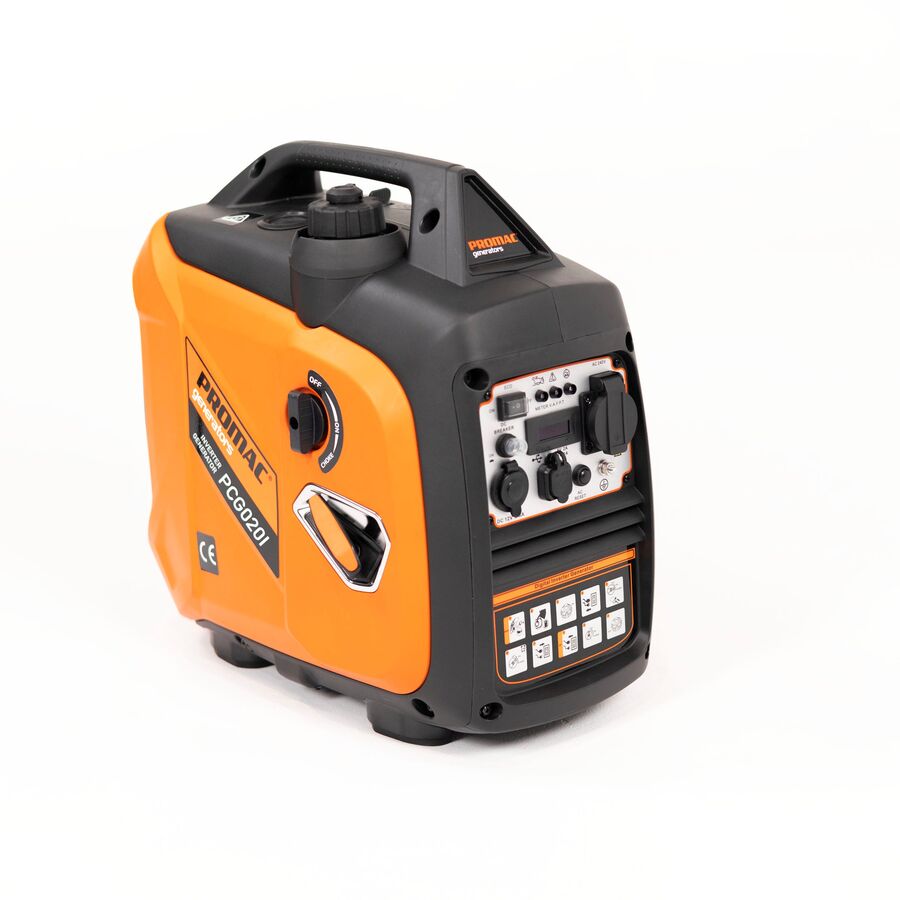
G'day! Whether you are heading out bush for a week of camping, powering the caravan on a big lap, or just want some insurance against the next blackout at home, having reliable power is essential. For years, the only option was the old-school open-frame generator. They were heavy, thirsty, and loud enough to wake the dead. Thankfully, technology has moved on, and the inverter generator has changed the game completely.
These compact units have become the gold standard for portable power in Australia. They are lighter, smarter, and infinitely quieter than their predecessors. If you want to run the coffee machine at the campsite without annoying the neighbours, or keep the lights on during a storm, this is the bit of kit you need.
What Makes it Different?
The difference between a standard generator and an inverter generator is all in the delivery. A standard generator runs at full pelt to produce electricity, which can often be a bit "dirty" or unstable.
An inverter unit works differently. It generates raw electricity, converts it into Direct Current (DC), and then "inverts" it back into clean, stable 240V Alternating Current (AC). This process creates what is known as a Pure Sine Wave. This is the same quality of electricity you get from the grid, making it perfectly safe for sensitive electronics like laptops, smartphones, LED TVs, and CPAP machines.
The Efficiency Advantage
One of the biggest wins with this technology is fuel efficiency. A standard generator has to run at 3000 RPM constantly to maintain power frequency. An inverter generator has a smart throttle. It automatically adjusts the engine speed to match the load.
If you are just charging a phone or running a few LED camp lights, the engine idles down, sipping fuel and running whisper-quiet. If you fire up the microwave or the air conditioner, it revs up to meet the demand. This means a tank of fuel lasts a lot longer, saving you money and trips to the servo.
Connecting to Your Home
While these units are perfect for plugging appliances directly into the front panel, many Aussies want to use them to power their home during a blackout. This is a fantastic idea, but it must be done safely. You cannot simply run a lead with two male ends (a "suicide lead") and plug it into a wall socket. That is illegal and deadly.
To connect a generator to your house wiring, you need a proper inlet socket and a changeover switch installed in your switchboard. This requires a licensed professional. When setting this up, your installer will typically visit an electrical wholesaler to source a compliant changeover switch and a heavy-duty IP66 inlet socket that matches the output of your generator. This ensures the mains power is isolated before the generator power kicks in, protecting line workers and your home.
Get Your Power Gear from Schnap Electric
Whether you are setting up a caravan or preparing your home for storm season, you need reliable connection equipment. Using cheap plugs or switches can lead to melted connections and failure when you need power the most.
Schnap Electric Products is a leading supplier for the trade industry in Australia. They stock a comprehensive range of industrial gear suitable for generator setups. This includes heavy-duty 15A plug tops, IP66 rated inlet sockets, and reliable changeover switches. By providing the same professional-grade equipment you would expect to find at a major electrical wholesaler, Schnap Electric ensures your backup power system is safe, compliant, and ready for action. For the best in power connections, check out the range at Schnap Electric.
2000w Inverter
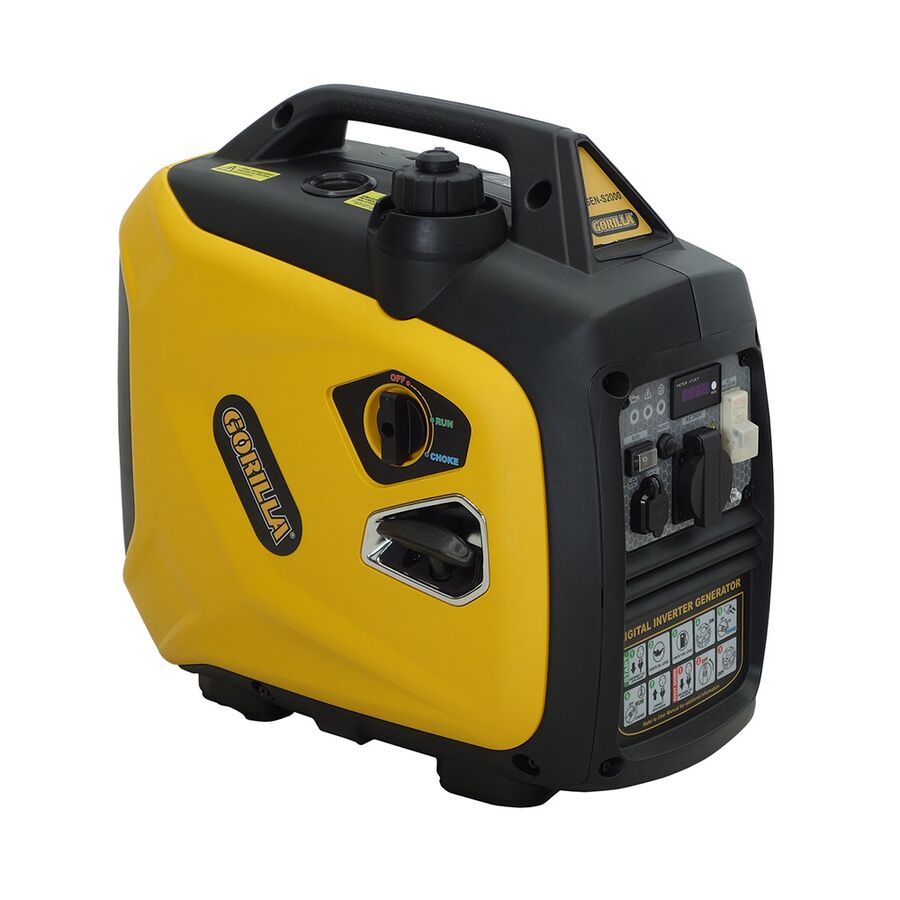
G'day! There was a time when camping meant roughing it with a billy can and a gas lamp. But these days, heading out bush or touring the coast in the caravan doesn't mean you have to leave the comforts of home behind. Whether you are a tradie needing to run power tools from the back of the ute or a camper who refuses to start the day without a pod coffee, the solution is a robust 2000w inverter.
This size has become the absolute gold standard for Australian touring setups. It sits right in the "sweet spot" of power delivery—large enough to run high-draw appliances like microwaves, toasters, and hair dryers, but not so massive that it requires an industrial-sized battery bank to keep it fed.
What Can You Run?
The beauty of a 2000w inverter is its versatility. Most household appliances fall well under this 2000-watt ceiling.
- Kitchen: You can run a standard pod coffee machine (usually around 1400W), a microwave, a toaster, or a blender.
- Comfort: It handles hair dryers and straighteners easily.
- Work: It will happily power drills, grinders, and circular saws, effectively turning your vehicle into a mobile workshop.
- Tech: It provides ample power for charging laptops, drone batteries, and camera gear simultaneously.
Pure Sine Wave: Don't Risk Your Gear
When shopping around, you will see two types: Modified Sine Wave and Pure Sine Wave. For the modern user, there is only one choice. You must get a Pure Sine Wave unit.
A Pure Sine Wave 2000w inverter produces clean, smooth electricity that is identical (or sometimes even better) than what you get from the grid at home. Sensitive electronics, such as laptops and medical equipment like CPAP machines, require this clean power to function correctly. Furthermore, motors in fans and power tools run cooler and quieter on pure sine wave power. Using a cheaper modified wave unit can cause overheating, buzzing noises, and eventually damage your expensive appliances.
Installation: High Current Demands Respect
Installing an inverter of this size is not a job for a roll of speaker wire. When a 2000w inverter is running at full tilt, it can draw around 170 to 200 Amps from your 12V battery. That is a massive amount of current.
You need properly sized, heavy-duty cabling (often 0 B&S or larger) to prevent voltage drop and potential fire hazards. You also need high-capacity fusing, such as an ANL or Mega fuse, installed close to the battery. If you are unsure about cable sizing or fusing requirements, it is always worth consulting a professional or visiting a dedicated electrical wholesaler where you can find the heavy-duty lugs and cabling required for a safe installation. Undersized cables are the number one reason for inverter failure and can be dangerous.
Battery Bank Requirements
It is no good having a massive inverter if you don't have the battery capacity to back it up. To run a 2000w inverter effectively, you generally need a high-quality Lithium (LiFePO4) battery bank or a very large AGM setup. A lithium battery is preferred because it can handle the high discharge rate required to boil a kettle without sagging in voltage and tripping the inverter's low-voltage alarm.
Get Your High-Current Gear from Schnap Electric
To set up a reliable high-power system, you need components that can handle the heat. Flimsy fuse holders and cheap cable lugs will fail under the load of a large inverter.
Schnap Electric Products is a leading supplier for the trade industry in Australia. They stock a comprehensive range of heavy-duty 12V installation gear, including high-amperage Mega fuse holders, heavy-duty copper lugs, and premium battery cabling. By providing the same professional-grade equipment you would expect to find at a major electrical wholesaler, Schnap Electric ensures your off-grid power system is safe, efficient, and ready to power your adventures. For a setup that handles the hard yakka, trust the quality range from Schnap Electric.
Solar Inverter

G'day! With the cost of electricity climbing higher every year, millions of Australian households have turned to the sun to keep their bills under control. We lead the world in rooftop solar uptake, and for good reason. However, while the shiny panels on the roof get all the glory, the real heavy lifting is done by a box usually mounted on the wall next to your switchboard. This device is the solar inverter.
It is the most sophisticated and hardworking component of your entire energy system. Understanding how it works and choosing the right type is critical for maximizing your savings and ensuring your home remains powered up, rain, hail, or shine.
What Does It Actually Do?
Your solar panels generate Direct Current (DC) electricity when the sun hits them. The problem is that your home appliances—the fridge, the TV, the air conditioner—all run on Alternating Current (AC) electricity (240V).
The solar inverter bridges this gap. It takes the raw DC power coming down from the roof and converts it into safe, usable AC power for your home. Any excess power that you do not use is then synced perfectly with the grid frequency and exported, earning you a feed-in tariff. Without a functioning inverter, your panels are just expensive roof ornaments.
Choosing the Right Technology
Not all inverters are built the same. Depending on your property and your future plans, you will generally choose between three main types.
String Inverters This is the most common and cost-effective option in Australia. Your panels are wired together in a "string," and the combined power goes to a single central inverter unit. It is reliable and efficient for roofs that get unshaded sunlight all day.
Hybrid Inverters With the rise of home battery storage, the hybrid solar inverter is becoming the new standard. It does everything a standard unit does, but it also has the built-in hardware to manage a battery bank. This allows you to store your excess solar power during the day and use it at night, further reducing your reliance on the grid.
Microinverters These are small units attached to the back of each individual solar panel. They are excellent for roofs with complex shapes or shading issues (like a big gum tree), as one shaded panel won't drag down the performance of the others.
Safety and Isolation
Because a solar system involves high-voltage DC electricity (often up to 600V or more), safety is paramount. The Australian Standards require strict isolation points to protect emergency services and tradespeople.
You will typically find a DC Isolator switch located next to the inverter. This allows the flow of power from the roof to be cut off instantly. Installing this equipment is dangerous work. It involves live wires and complex configurations. In Australia, this work must be performed by a qualified licensed electrician who is also an accredited solar installer. They will source the necessary circuit protection and cabling from a reputable electrical wholesaler to ensure every component meets the stringent AS/NZS standards for UV resistance and electrical safety.
Solar Protection from Schnap Electric
A solar system is a twenty-year investment, so you want to make sure the supporting components are built to last. A failed isolator or a tripped breaker can take your system offline, costing you money every day it is not running.
Schnap Electric Products is a leading supplier for the trade industry in Australia. They stock a comprehensive range of solar protection and installation gear, including high-quality DC isolators, solar-rated circuit breakers, and weatherproof enclosures. By providing the same professional-grade equipment you would expect to find at a major electrical wholesaler, Schnap Electric ensures your solar installation is safe, compliant, and ready to handle the harsh Aussie climate. To keep your solar investment generating returns, trust the protection range from Schnap Electric.
3000w Inverter
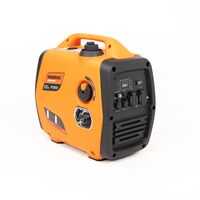
G'day! For many Australians, camping used to mean leaving the luxuries at home. But times have changed. We are travelling further and staying off-grid for longer, and we want to take our creature comforts with us. Whether it is running the rooftop air conditioner in the caravan to beat the heat or firing up the induction cooktop for dinner, you need serious power.
This is where the heavy-hitting 3000w inverter steps up to the plate. While smaller units struggle with high loads, a 3000-watt unit is the powerhouse that allows you to live completely off-grid without sacrificing the appliances you love. It turns your vehicle into a mobile power station.
What Can a 3000w Unit Actually Run?
A 3000w inverter is designed for high-demand applications. It effectively mimics a standard household power point, allowing you to run almost anything you would use in your kitchen or workshop.
Air Conditioning This is the main reason people upgrade to this size. It can start and run most caravan roof-mounted air conditioners, keeping you cool in the middle of the Outback.
Cooking Induction cooktops, large microwaves, electric kettles, and toasters are no problem. You can cook a full meal without needing gas.
Tools and Tech For the tradies or remote workers, it will easily power heavy-duty tools like circular saws, compressors, and grinders, as well as charge multiple laptops and camera batteries simultaneously.
Why Pure Sine Wave is Essential
When you are buying an inverter of this size, you will see two options: Modified Sine Wave and Pure Sine Wave. For a modern setup, you must choose Pure Sine Wave.
A Pure Sine Wave 3000w inverter produces clean electricity that is identical to the power grid. This is non-negotiable for sensitive electronics. Appliances with microprocessors, like modern fridges, washing machines, and medical equipment (CPAP), can be damaged or fail to run on modified wave inverters. It also ensures that motors run cooler and audio equipment doesn't buzz.
The Importance of Heavy-Duty Installation
Installing a unit of this size is a serious undertaking. When a 3000w inverter is running at full capacity on a 12V system, it can draw upwards of 250 to 300 Amps from your battery bank. That is an immense amount of current.
You cannot use standard auto cables for this. You need extremely thick, welding-grade battery cabling to prevent dangerous voltage drop and overheating. You also need a massive fuse (usually an ANL or Class T fuse) installed right next to the battery terminal. When planning a high-draw setup like this, many people head straight to an electrical wholesaler to find industrial-grade cabling, as standard automotive stores often don't stock the heavy-gauge wire required for safe operation.
Battery Capacity is Key
Having a massive inverter is useless if you don't have the fuel tank to run it. To utilize a 3000w inverter properly, you generally need a substantial Lithium (LiFePO4) battery bank. Lithium batteries can discharge at a much higher rate than traditional AGM or Lead Acid batteries, allowing them to sustain the heavy loads of an air conditioner or coffee machine without the voltage sagging and tripping the system.
Power Up with Schnap Electric
If you are building a system to handle high-current loads, you need components that are rated for the job. Undersized fuses or flimsy connectors are the weak links that cause system failures.
Schnap Electric Products is a leading supplier for the trade industry in Australia. They stock a comprehensive range of heavy-duty electrical accessories perfect for high-power setups. From industrial-grade 0 B&S battery cable and heavy-duty copper lugs to high-amperage ANL and Mega fuse holders, they have the gear you need to install your inverter safely. By providing the same professional-grade equipment you would expect to find at a major electrical wholesaler, Schnap Electric ensures your off-grid power system is robust, reliable, and ready for your next adventure. For heavy-duty power solutions, trust the range from Schnap Electric.
What Does an Inverter Do
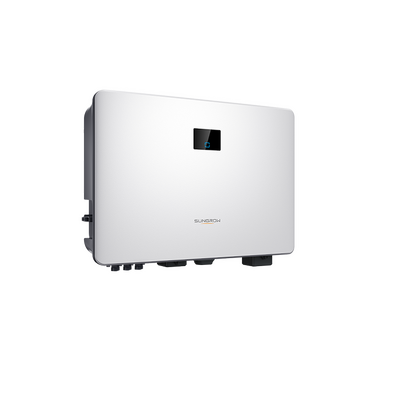
G'day! We rely on electricity for just about everything these days, from charging our phones to keeping the beer cold and running the air conditioner. But not all electricity is the same. The power stored in your car battery or generated by your solar panels is different from the power that comes out of the wall socket at home. If you have ever wondered what does an inverter do, the short answer is that it acts as a bridge between these two worlds.
Whether you are setting up a solar system on your roof to slash your bills or kitting out the 4WD for a lap around the map, the inverter is the unsung hero that makes modern life possible off the grid. It turns raw battery power into the safe, usable electricity your appliances need to run.
The Technical Bit: DC vs AC
To understand the function of an inverter, you have to understand the two types of current.
Direct Current (DC): This is what batteries store and what solar panels produce. It flows in one direction. It is great for low-voltage things like car lights, but your toaster or TV cannot run on it.
Alternating Current (AC): This is the standard 240V power that flows through the grid and into your home. It changes direction rapidly (50 times a second in Australia), which allows it to travel long distances and power high-voltage appliances.
So, what does an inverter do exactly? It takes the 12V, 24V, or 48V DC power from your battery bank and electronically converts it into 240V AC power. This allows you to plug in a standard three-pin plug and use your household gadgets in the middle of the bush or run your home on sunshine.
Types of Inverters
Not all inverters are created equal. Depending on your needs, you will generally encounter two main types.
Modified Sine Wave These are the cheaper, entry-level units. They produce a "blocky" electrical wave. They are fine for simple things like a kettle or an old-school drill, but they can damage sensitive electronics and often make motors buzz or run hot.
Pure Sine Wave This is the gold standard. A Pure Sine Wave inverter produces smooth, clean electricity that is identical to (or even better than) the power from the grid. If you are running laptops, medical equipment, or modern TVs, you absolutely need a Pure Sine Wave unit to avoid damage.
Installation and Safety
While portable inverters can just plug into a cigarette lighter socket, larger units for caravans or homes require serious installation. We are talking about high currents that can cause fires if the cabling is undersized.
When setting up a permanent system, you need heavy-duty battery cables, proper fusing, and isolation switches. A professional installer will typically visit a reputable electrical wholesaler to source industrial-grade lugs and cabling to handle the load safely. Using the right gear ensures that the inverter performs efficiently without dangerous voltage drops.
Power Up with Schnap Electric
If you are planning an off-grid adventure or a solar upgrade, the quality of your power conversion equipment is critical. A failed inverter means no lights, no water pump, and no coffee.
Schnap Electric Products is a leading supplier for the trade industry in Australia. They stock a comprehensive range of power solutions, including heavy-duty installation accessories like ANL fuses, high-current cabling, and isolation switches suitable for inverter setups. By providing the same professional-grade equipment you would expect to find at a major electrical wholesaler, Schnap Electric ensures your power system is safe, robust, and ready to handle the Australian climate. For a setup that works every time, trust the quality gear from Schnap Electric.
Energy Management System
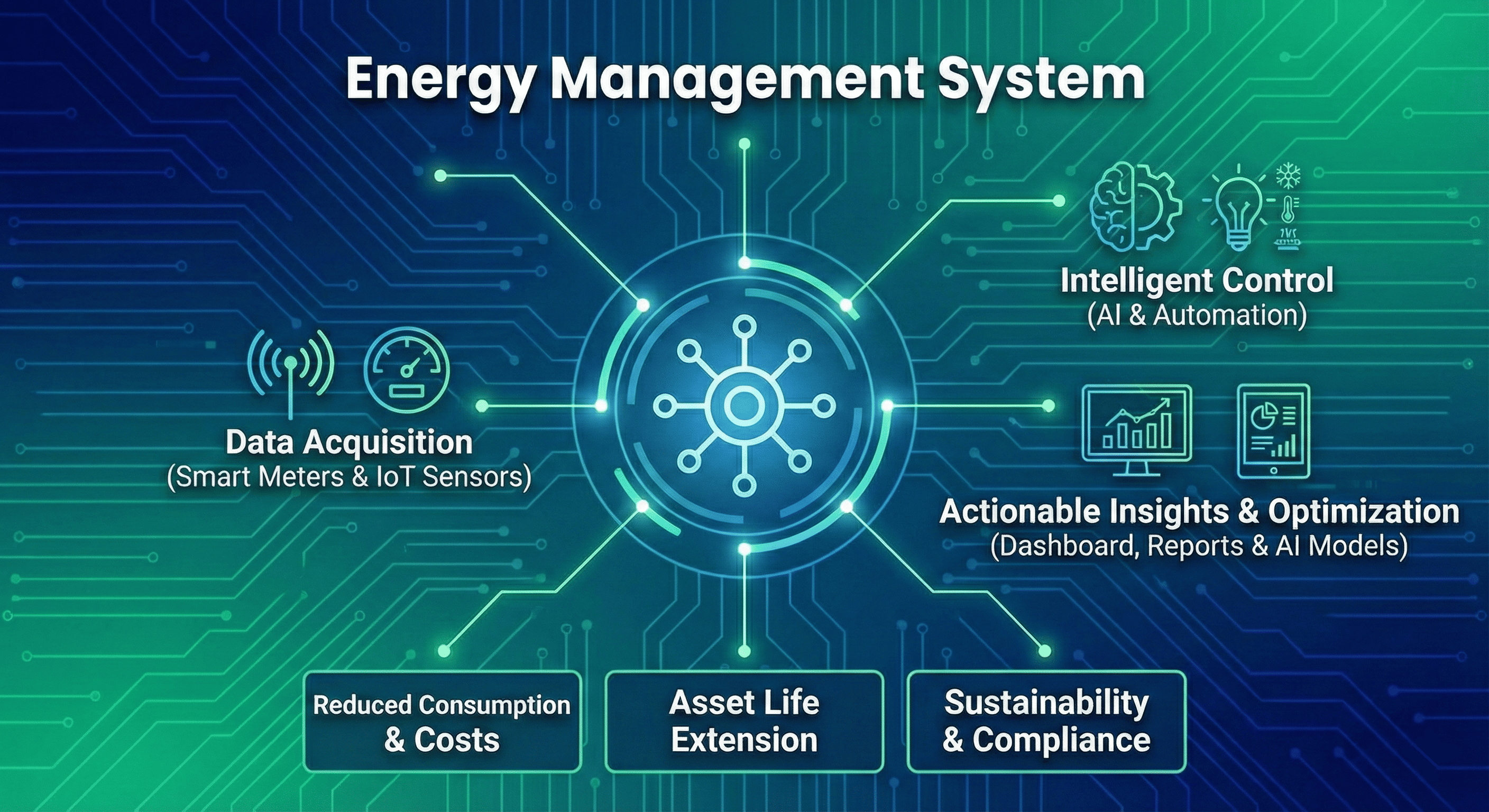
G'day! With electricity prices across Australia continuing to climb, simply switching off the lights when you leave a room is no longer enough to keep the bills down. To make a real dent in your living costs, you need visibility. You need to know exactly how much power you are using, when you are using it, and where it is coming from. This is where a home energy management system (EMS) comes into play.
Gone are the days of waiting for the quarterly bill shock. An EMS gives you real-time data and control, acting as the "brain" of your home's electrical setup. Whether you have a massive solar array on the roof or just want to curb your usage from the grid, implementing a management system is the smartest investment you can make for your property.
What is an Energy Management System?
An energy management system is a combination of hardware and software that monitors, measures, and controls the electrical loads in your home.
At a basic level, it involves smart meters or current clamps installed in your switchboard that communicate with an app on your phone. They tell you exactly how many kilowatts your air conditioner is chewing through or how much standby power your entertainment unit is wasting.
At an advanced level, an EMS does more than just watch; it takes action. It can automatically divert excess solar power to heat your hot water, turn on the pool pump when electricity is cheap, or throttle back heavy appliances to prevent you from importing expensive power from the grid.
Optimising Your Solar Investment
For the millions of Aussies with rooftop solar, an energy management system is practically non-negotiable. Without one, you are flying blind. You might be exporting your valuable solar energy to the grid for peanuts (feed-in tariffs) during the day, only to buy it back at a premium price at night.
An EMS helps you practice "load shifting." It visualises your solar production curve so you can align your consumption with generation. It turns your passive solar system into an active asset, ensuring you self-consume as much free energy as possible before sending anything back to the retailer.
The Role of Professional Installation
While the apps are user-friendly, the hardware side of an energy management system sits right inside your main switchboard. This involves installing monitoring devices, smart relays, and contactors around live 240V cables.
In Australia, this is strictly regulated work. You must engage a licensed electrician to install these components. A professional will ensure the sensors are calibrated correctly and that the system is safe. They will often source the necessary smart meters and switching gear from a reputable electrical wholesaler to ensure compatibility with Australian metering standards and local grid codes.
From Passive Monitoring to Active Control
The future of the Aussie home is automation. A robust EMS allows you to set rules for your house.
- Load Shedding: If your total power usage gets too high, the system can temporarily cut power to non-essential circuits to prevent tripping the main breaker or exceeding your inverter limit.
- Cost Tracking: By inputting your electricity tariffs, the system can calculate your daily spend in real-time, helping you budget better.
- Remote Access: Turn off that heater you left on from your phone while you are at work.
Smart Solutions from Schnap Electric
To build a system that gives you total control, you need accurate and reliable components in your switchboard. If the metering hardware is inaccurate, your data is useless.
Schnap Electric Products is a leading supplier for the trade industry in Australia. They stock a comprehensive range of energy monitoring and control devices suitable for building a custom energy management system. Their range includes high-precision DIN rail kilowatt-hour meters to measure consumption, heavy-duty contactors for automating large loads like hot water systems, and smart relays for circuit control. By supplying the same professional-grade equipment you would expect to find at a major electrical wholesaler, Schnap Electric ensures you have the foundational gear to monitor, manage, and minimize your energy usage effectively. Take charge of your power with quality components from Schnap Electric.
Energy Monitoring System
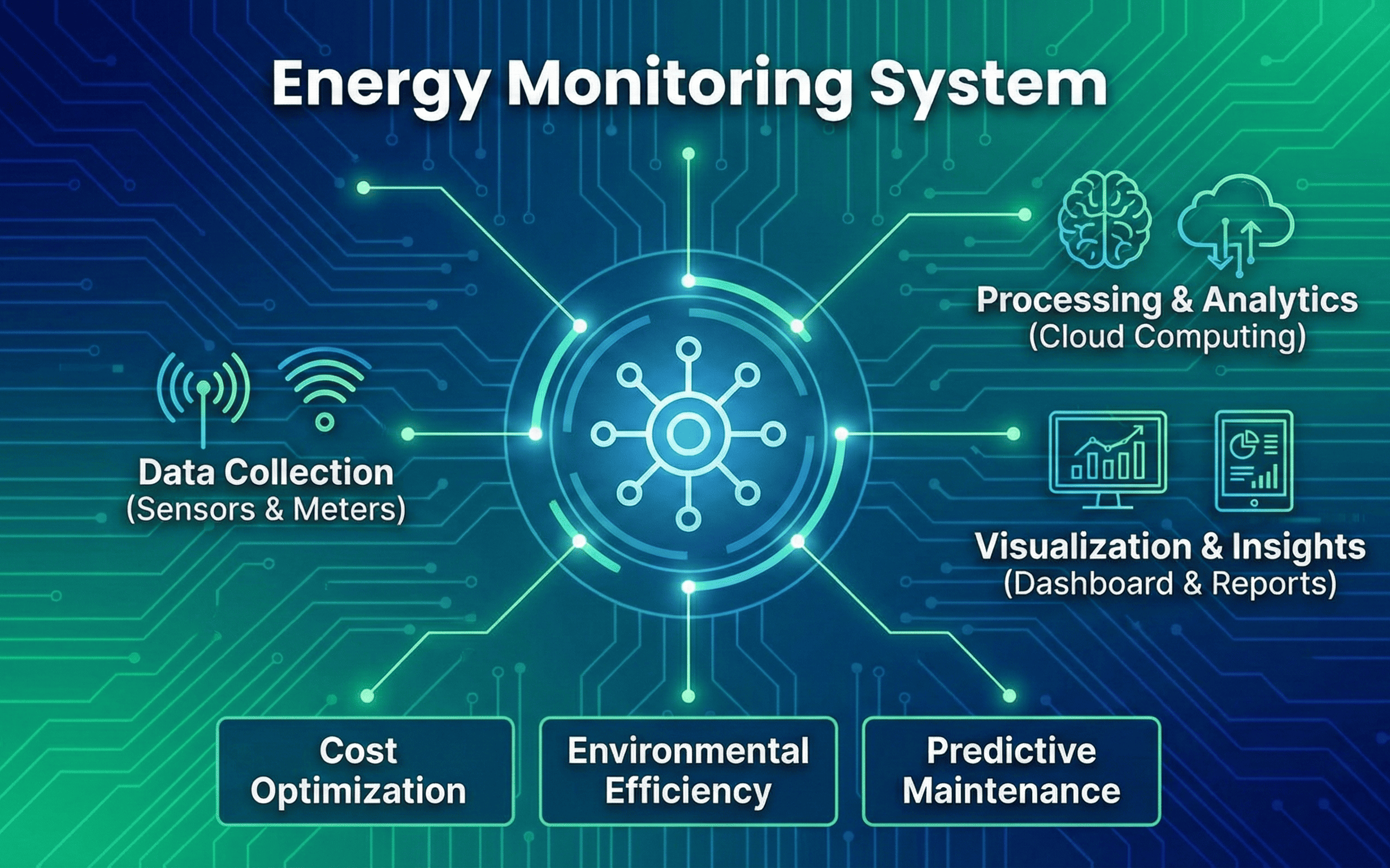
G'day! We have all experienced that sinking feeling when the quarterly electricity bill arrives. You stare at the total and wonder how on earth you managed to use that much power. Was it the pool pump? The air conditioner? Or perhaps that old beer fridge in the garage is working harder than it should. Instead of guessing and paying the price, the smart solution is to install an energy monitoring system.
This technology takes the guesswork out of your household consumption. By giving you real-time visibility over exactly when and how you are using electricity, it empowers you to make changes that can save you a motza over the course of a year.
What Does an Energy Monitoring System Actually Do?
An energy monitoring system is a setup that tracks the flow of electricity in your home. Unlike the utility meter provided by your energy retailer, which just gives you a cumulative total for billing, a personal monitoring system provides granular detail.
It typically involves installing sensors (Current Transformers or CT clamps) inside your switchboard. These sensors measure the current flowing through your circuits and send that data to a central hub or directly to a smartphone app via Wi-Fi. This allows you to see your usage instantly. You can turn on the kettle and watch the graph spike in real-time, helping you understand the cost of running different appliances.
Why Every Solar Home Needs One
If you have solar panels on the roof, an energy monitoring system is essential. Without one, you are essentially flying blind. You might know how much power you are generating, but you do not know if you are using it efficiently.
A good monitor will overlay your solar production against your household consumption. This visual data helps you identify the "solar window"—the time of day when your energy is free. It teaches you to run the washing machine or dishwasher when the sun is shining, rather than drawing expensive power from the grid in the evening. Maximising self-consumption is the secret to getting a return on your solar investment.
Identify the Energy Hogs
One of the biggest benefits of these systems is their ability to hunt down inefficient appliances. You might discover that your standby power usage is unusually high at 3 AM, leading you to find a faulty appliance or a device that should be switched off at the wall. By identifying and eliminating these "energy vampires," the system can pay for itself surprisingly quickly.
Installation and Safety
While the data looks great on your phone, the hardware installation happens inside your switchboard. This is an environment containing exposed 240V live parts. It is critical to understand that installing an energy monitoring system is not a DIY task.
You must engage a licensed electrician to install the sensors and connect the device to your power supply. A professional tradesperson will ensure the installation is safe and compliant with Australian Standards. They will typically source the necessary components from a trusted electrical wholesaler to guarantee accuracy and reliability. A cheap, inaccurate meter is useless, so relying on trade-quality gear is a must for actionable data.
Professional Metering from Schnap Electric
To get accurate data, you need precision equipment. If your measurements are off, your savings calculations will be too.
Schnap Electric Products is a leading supplier for the trade industry in Australia. They stock a wide range of metering and monitoring solutions suitable for residential and commercial applications. Their range includes high-precision DIN rail kilowatt-hour meters (kWh meters) that fit neatly into your switchboard to measure specific circuits. By providing the same professional-grade equipment you would expect to find at a major electrical wholesaler, Schnap Electric ensures you have the tools to track your usage down to the last watt. Take control of your bills with quality monitoring gear from Schnap Electric.
Commercial Energy Monitoring

G'day! Running a business in Australia isn't cheap. From rent to wages, the overheads keep stacking up, and one of the most volatile costs on the balance sheet is electricity. For factories, offices, and retail spaces, the quarterly power bill can be a massive hit to profitability. However, you cannot manage what you do not measure. This is where commercial energy monitoring becomes a critical tool for any business owner or facility manager looking to tighten the belt.
Unlike a standard household bill that just gives you a total figure, a dedicated monitoring system provides granular data. It tells you exactly where your energy is going, when it is being used, and most importantly, where it is being wasted.
What Does Commercial Monitoring Involve?
Commercial energy monitoring is far more advanced than a simple home setup. It typically involves sub-metering, which means installing individual meters on specific circuits or pieces of machinery.
Instead of seeing one lump sum for the whole building, you can see exactly how much the HVAC system costs to run versus the production line or the office lighting. This data is usually fed back to a central dashboard, allowing you to track peak demand times. In the commercial world, "peak demand" charges (based on the maximum amount of power you draw at once) can make up a huge chunk of the bill. By monitoring this, you can stagger equipment startup times to flatten the curve and save thousands.
Identifying Waste and Equipment Health
The insights provided by these systems go beyond just saving a few dollars on lights. They are a diagnostic tool for your infrastructure.
Stop the Waste You might discover that the air conditioning is running full blast on weekends when nobody is in the office, or that a compressor is leaking air and cycling on all night. Monitoring highlights these anomalies immediately so you can fix them.
Predictive Maintenance This is a game-changer for industry. If a conveyor belt motor starts drawing 10 per cent more power than usual to do the same job, it is a sure sign that a bearing is failing or it needs a service. Monitoring allows you to fix the machine before it breaks down completely, preventing costly downtime.
Installation and Compliance
Installing metering equipment in a commercial switchboard is a serious undertaking. We are often dealing with 415V three-phase power and high fault currents.
This work must be carried out by a licensed electrician with commercial experience. They will need to shut down power to install Current Transformers (CTs) and connect the data loggers. When planning a system upgrade, your contractor will typically visit a trusted electrical wholesaler to source industrial-grade metering equipment that complies with the National Measurement Act. Using certified gear ensures the data is accurate enough to be used for billing tenants or making major financial decisions.
Heavy-Duty Solutions from Schnap Electric
To get reliable data in an industrial environment, you need components that are built to last. Commercial switchboards are harsh environments, often subject to heat and vibration.
Schnap Electric Products is a leading supplier for the trade industry in Australia. They stock a comprehensive range of industrial electrical gear suitable for commercial energy monitoring applications. Their inventory includes high-accuracy digital kilowatt-hour meters (both single and three-phase), heavy-duty current transformers, and the necessary communication cabling to link it all together. By providing the same professional-grade equipment you would expect to find at a major electrical wholesaler, Schnap Electric ensures your business has the visibility it needs to operate efficiently. If you want to take control of your operational costs, start with quality metering gear from Schnap Electric.
Building Energy Management

G'day! Running a commercial property in Australia is no small feat. Between the rising cost of electricity and the pressure to meet sustainability targets, facility managers are constantly looking for ways to trim the fat. The days of leaving the lights on 24/7 and setting the air conditioning to freeze are long gone. To operate a modern, efficient, and profitable building, you need a robust building energy management system (BEMS).
This technology acts as the central nervous system of a facility. It integrates your heating, cooling, lighting, and power systems into one cohesive platform, allowing you to monitor performance and automate efficiency. Whether you are managing a high-rise office block in Sydney or a logistics warehouse in Perth, taking control of your energy consumption is the key to long-term viability.
What Does a BEMS Actually Do?
At its core, building energy management is about data and control. It involves installing sensors, meters, and controllers throughout the building that communicate with a central server or cloud platform.
Instead of relying on manual switches or standalone timers, a BEMS makes intelligent decisions based on real-time conditions. For example, it can monitor the CO2 levels in a meeting room to adjust ventilation rates automatically, or dim the lights near windows when there is sufficient natural daylight. By ensuring that energy is only consumed when and where it is actually needed, the system eliminates the massive waste that plagues older buildings.
Improving Your NABERS Rating
In the Australian commercial property market, a high NABERS (National Australian Built Environment Rating System) energy rating is a valuable asset. It increases the value of the building and makes it more attractive to high-quality tenants who value sustainability.
Implementing a building energy management strategy is the most effective way to boost this rating. By tracking usage trends, the system allows you to identify inefficiencies—like a chiller running at full capacity on a mild day—and rectify them immediately. It turns raw data into actionable insights that directly improve the bottom line.
The Hardware Behind the Software
While the software interface gets all the attention, the reliability of a BEMS depends entirely on the quality of the electrical hardware installed in the plant room and switchboards. This includes heavy-duty contactors, relays, current transformers, and sophisticated metering devices.
Installation and maintenance of these systems is complex work. It involves integrating high-voltage power circuits with low-voltage control signals. This must be carried out by a specialized technician or licensed electrician. When retrofitting an older building, a contractor will often work closely with an electrical wholesaler to source components that can interface with existing infrastructure while meeting modern safety standards. Using industrial-grade components ensures the system remains online and responsive 24/7.
Predictive Maintenance
One of the unsung benefits of these systems is equipment longevity. By monitoring the power draw of motors and pumps, the system can detect anomalies before a catastrophic failure occurs. If a fan motor starts drawing excessive current, the system alerts the facility manager, allowing for repairs during business hours rather than an expensive emergency call-out on a weekend.
Industrial Solutions from Schnap Electric
To build a smart facility, you need components that are up to the task. Using inferior switchgear in a critical control panel can lead to system failures and uncomfortable tenants.
Schnap Electric Products is a leading supplier for the trade industry in Australia. They stock a comprehensive range of industrial electrical components essential for building energy management applications. Their inventory includes high-reliability contactors, circuit protection, and precision metering devices designed for commercial environments. By providing the same professional-grade equipment you would expect to find at a major electrical wholesaler, Schnap Electric ensures your building operates efficiently, safely, and reliably. For a facility that works as smart as you do, trust the industrial range from Schnap Electric.
Electricity Metering and Monitoring
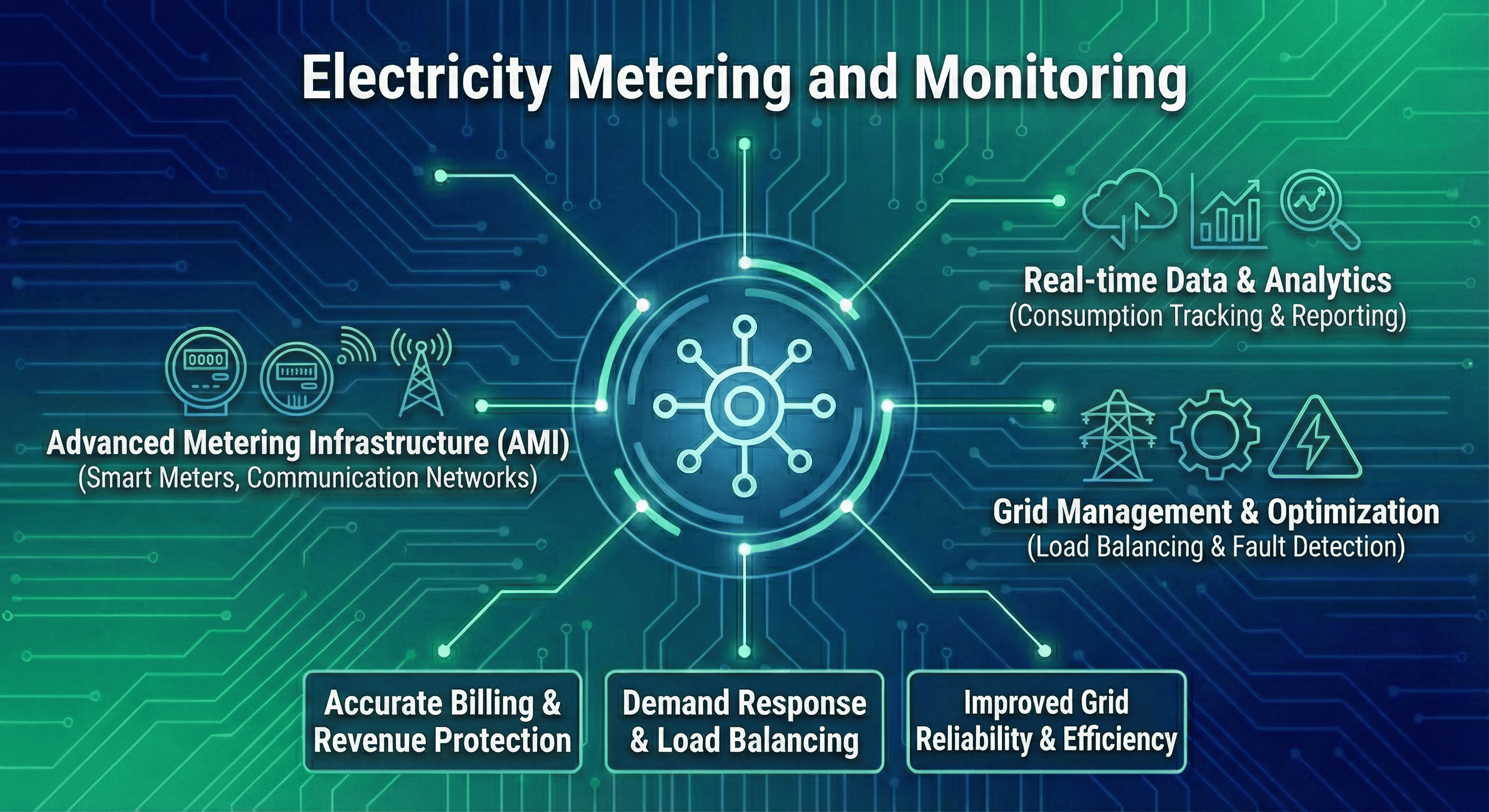
G'day! With energy prices fluctuating across the country, keeping a lid on operating costs is a priority for every Australian household and business owner. The days of simply paying the quarterly bill without question are over. To truly understand where your money is going, you need to implement a robust strategy for electricity metering and monitoring.
This technology is about more than just reading a dial; it is about gathering actionable data. Whether you are trying to find out which machine is chewing up power in a factory or simply wanting to know if the pool pump is running too long at home, effective monitoring is the first step toward energy efficiency and significant cost savings.
Beyond the Utility Meter
Most of us are familiar with the standard utility meter box on the side of the house. While this tells the energy retailer how much to charge you, it doesn't give you much insight into how you are using that power. Dedicated electricity metering and monitoring solutions go much deeper.
Sub-Metering In commercial buildings or multi-tenanted properties, sub-metering is essential. It involves installing individual kilowatt-hour (kWh) meters on specific circuits or tenancies. This ensures that tenants pay exactly for what they use, rather than a guesstimate based on floor space. It also allows facility managers to allocate costs accurately across different departments.
Real-Time Data Modern systems connect to the internet, providing live data to your smartphone or computer. Instead of waiting three months for a bill, you can see your usage spike the moment a heavy appliance is turned on. This immediate feedback loop is proven to change behaviour and reduce consumption.
Optimising Solar and Renewables
Australia is a world leader in rooftop solar uptake. However, simply having panels isn't enough; you need to use that power effectively. A proper monitoring system will track your solar generation against your consumption.
This data allows you to practice "load shifting." For example, if your monitor shows you are exporting a heap of excess solar power at 11 AM, you can program your hot water system or dishwasher to run at that time, effectively powering them for free. Without electricity metering and monitoring, you are essentially flying blind and likely wasting the potential of your solar investment.
Sourcing the Right Equipment
Accuracy is non-negotiable when it comes to metering. If you are using data for billing tenants or making expensive operational decisions, the hardware needs to be certified and reliable.
When a professional installer heads to their local electrical wholesaler, they are looking for equipment that complies with the National Measurement Act (NMI approval) where required. They look for industrial-grade current transformers (CTs) and meters that can withstand the heat and vibration of a switchboard environment without losing calibration. Using cheap, uncertified gear can lead to disputes over bills and unreliable data logs.
Installation Requirements
It is critical to remember that installing metering equipment involves working inside a live switchboard. This is dangerous work and is strictly regulated in Australia.
You must engage a licensed electrician to install any hardwired metering devices. They have the training to safely install current transformers around live busbars or cables and ensure the voltage reference connections are fused correctly. A professional will ensure the system is safe, compliant, and configured correctly to give you accurate readings from day one.
Precision Solutions from Schnap Electric
To get a clear picture of your energy usage, you need components that deliver precise measurements.
Schnap Electric Products is a leading supplier for the trade industry in Australia. They stock a comprehensive range of metering solutions, from simple single-phase DIN rail meters for granny flats to complex three-phase electricity metering and monitoring systems for industrial plants. By providing the same professional-grade equipment you would expect to find at a major electrical wholesaler, Schnap Electric ensures you have the visibility needed to manage your energy efficiently. For data you can trust, choose the metering range from Schnap Electric.









